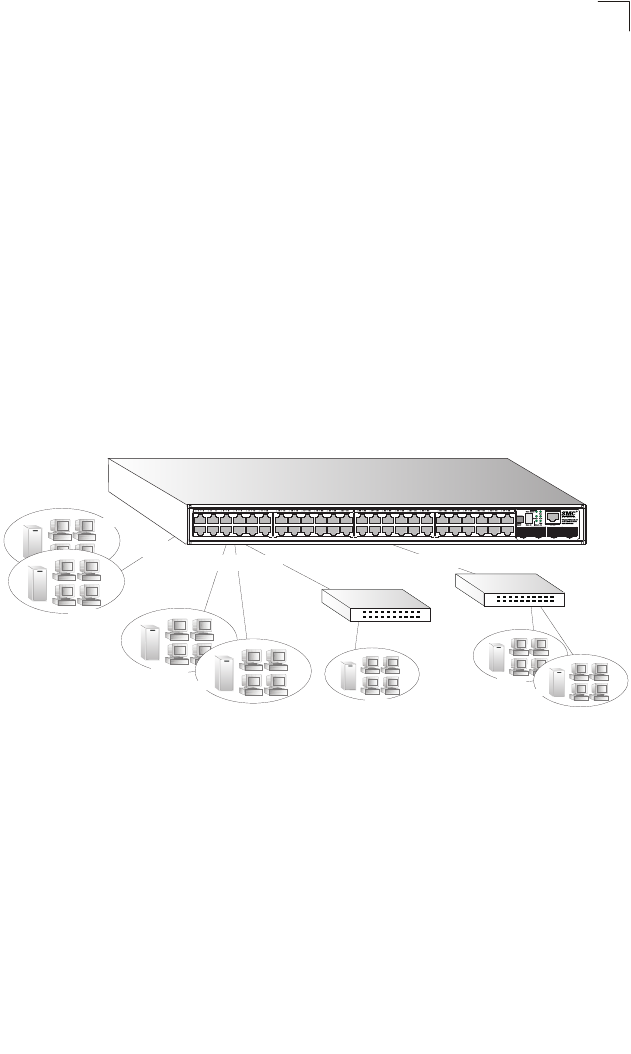
2-5
Application Examples
2
Making VLAN Connections
These switches support VLANs which can be used to organize any group of network
nodes into separate broadcast domains. VLANs confine broadcast traffic to the
originating group, and can eliminate broadcast storms in large networks. This
provides a more secure and cleaner network environment.
VLANs can be based on untagged port groups, or traffic can be explicitly tagged to
identify the VLAN group to which it belongs. Untagged VLANs can be used for small
networks attached to a single switch. However, tagged VLANs should be used for
larger networks, and all the VLANs assigned to the inter-switch links.
These switches also support multiple spanning trees which allow VLAN groups to
maintain a more stable path between all VLAN members. This can reduce the
overall amount of protocol traffic crossing the network, and provide a shorter
reconfiguration time if any link in the spanning tree fails.
At Layer 3, VLANs are used to create an IP interface, where one or more ports are
assigned to the same IP segment. Traffic is automatically routed between different
IP segments on the same switch, without any need to configure routing protocols.
Figure 2-4 Making VLAN Connections
Note: When connecting to a switch that does not support IEEE 802.1Q VLAN tags, use
untagged ports.
Finance
Marketing
VLAN 3
Untagged Ports
VLAN
unaware
switch
Tagged Port
VLAN
aware
switch
Tagged
Ports
Finance
VLAN 3
R&D
VLAN 2
Testing
R&D
Testing
VLAN 1
VLAN 2
VLAN 4
VLAN 1


















